The Feast of Love: from Faunus to Valentine
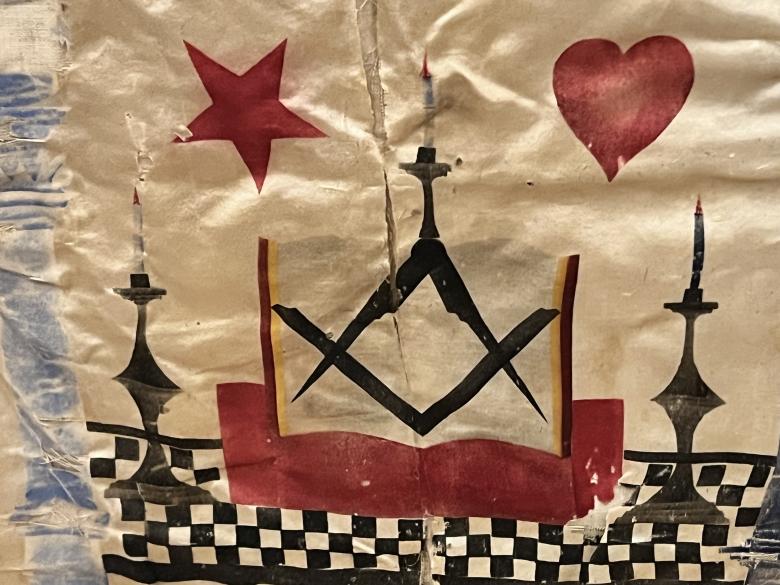

Some of our latest news
The Feast of Love: from Faunus to Valentine
What did the traditional feast of all lovers in ancient Rome really look like? On 15 February, naked young men would run down the streets of the city, soaked in the fresh blood of a sacrificial goat, and whip the women they came across with cuts of the skins of the recently slaughtered animals. The women gratefully accepted the blows, believing that this ritual would result in beautiful offspring and easy childbirth.
Under the Esquiline Hill, unbroken for many years,
sacredly kept there, was Juno's grove.
Only there came wives and husbands together,
They knelt together in supplication,
When suddenly the tops of the trees in the woods rumbled.
And, to the amazement of all, the voice of the goddess said:
"May the sacred goat be incarnated into the matrons of Italy!"
Froze all, hearing this mysterious call.
Augur was there (but his name is long forgotten,
He's from Etruscan land. He came as an exile to Rome,)
He slaughtered a goat, and the women, all at his command.
with shreds of his skin to whip themselves,
And when the tenth time the crescent moon renewed its horns.
Each husband became a father, the wife a mother.
Ovid, Fasts.
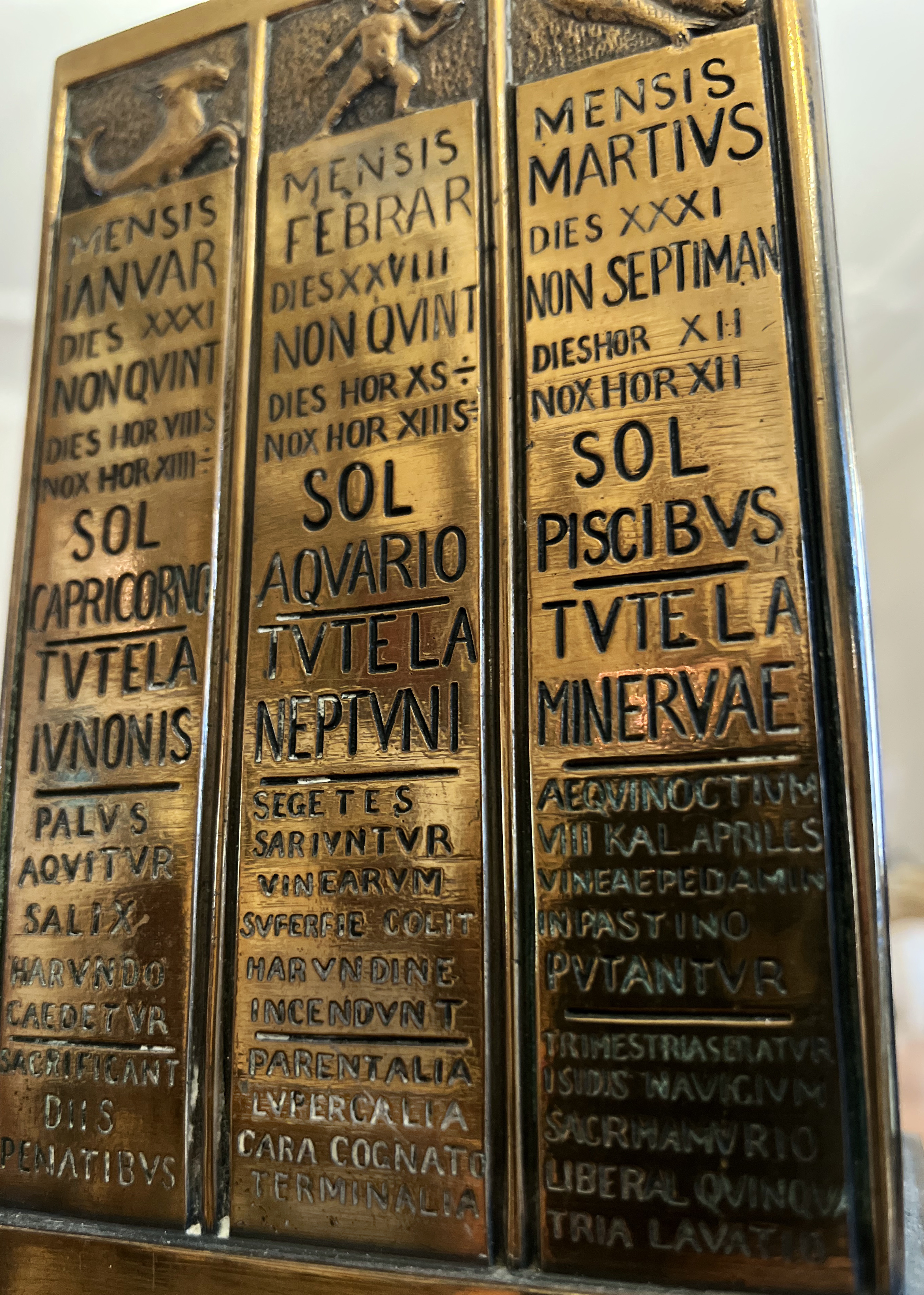
According to some versions, it was this rite - the feast of Lupercali, celebrated on 15 February - that Christians wanted to ban, introducing St Valentine's Day instead.
Ovid, in his poem The Fasts, traces the feast back to the time of the ancient Pelasgians. And says that they ran naked in memory of the wild men of Arcadia. In the same poem, Ovid presents another version, according to which on this day the founders of Rome Romulus and Remus were forced to go in pursuit of cattle thieves who tried to steal steers while the brothers were preparing sacrificial goat meat for Pan.
The very name Lupercalia is connected with the Latin word for wolf - in memory of the she-wolf who nurtured the infants - the future founders of Rome.
It is believed that Pope Gelasius decided to change this rite into a Christian one in 496. The holiday was moved to 14 February, and the focus shifted from carnal to romantic love. It is still not entirely clear which Valentine's Day is celebrated - the one who secretly concluded marriages forbidden during the war and was executed for it on 14 February 269, or the Roman patrician Valentine, a secret Christian who married his own servants and became a victim of denunciation. According to legend, the Roman voluntarily asked to be executed himself, saving the lives of his servants. It was this Valentine who is believed to have passed heart-shaped notes to his servants in prison, signifying Christian love.
Apart from those mentioned, there are at least two other hagiographies of St Valentines.
However, St Valentine's Day itself begins to be celebrated much later. We see the established tradition only at the end of the 14th century, for example, in the poem "The Parliament of the Birds" by Geoffrey Chaucer:
"For this was on Saint Valentine's Day, when every bird cometh there to choose his mate."
Also since the late Middle Ages this day began to be celebrated in France, and in other parts of Europe, and in the 18-19 centuries it reached Russia. The first "valentines" - love notes, often in the shape of a heart - have survived since the 15th century.
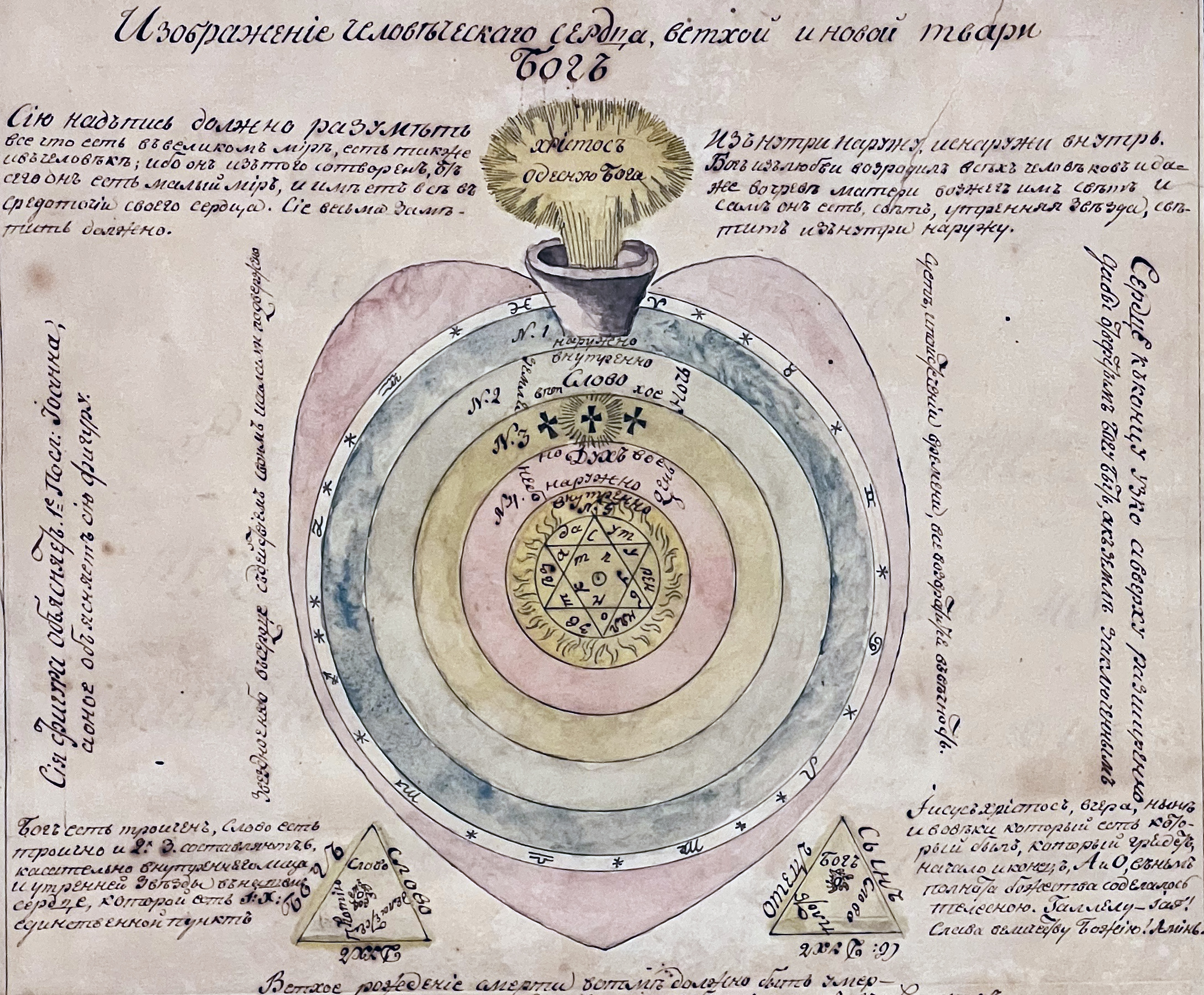
For Freemasonry, the continuity of the tradition from ancient times to the present day is interesting.
In addition, for Freemasons, the heart is one of the most important symbols borrowed from Christianity, but it has more ancient roots.
As a symbol of vitality, and life force, the heart is not only ascetic, Christian love. It can also be passion and the pain of understanding human nature.
The Gospel of Luke says:
And then the thoughts that many people keep in the depths of their souls will be revealed, bringing you unbearable pain like that which a sword brings, piercing the heart (chapter 2 verse 35).
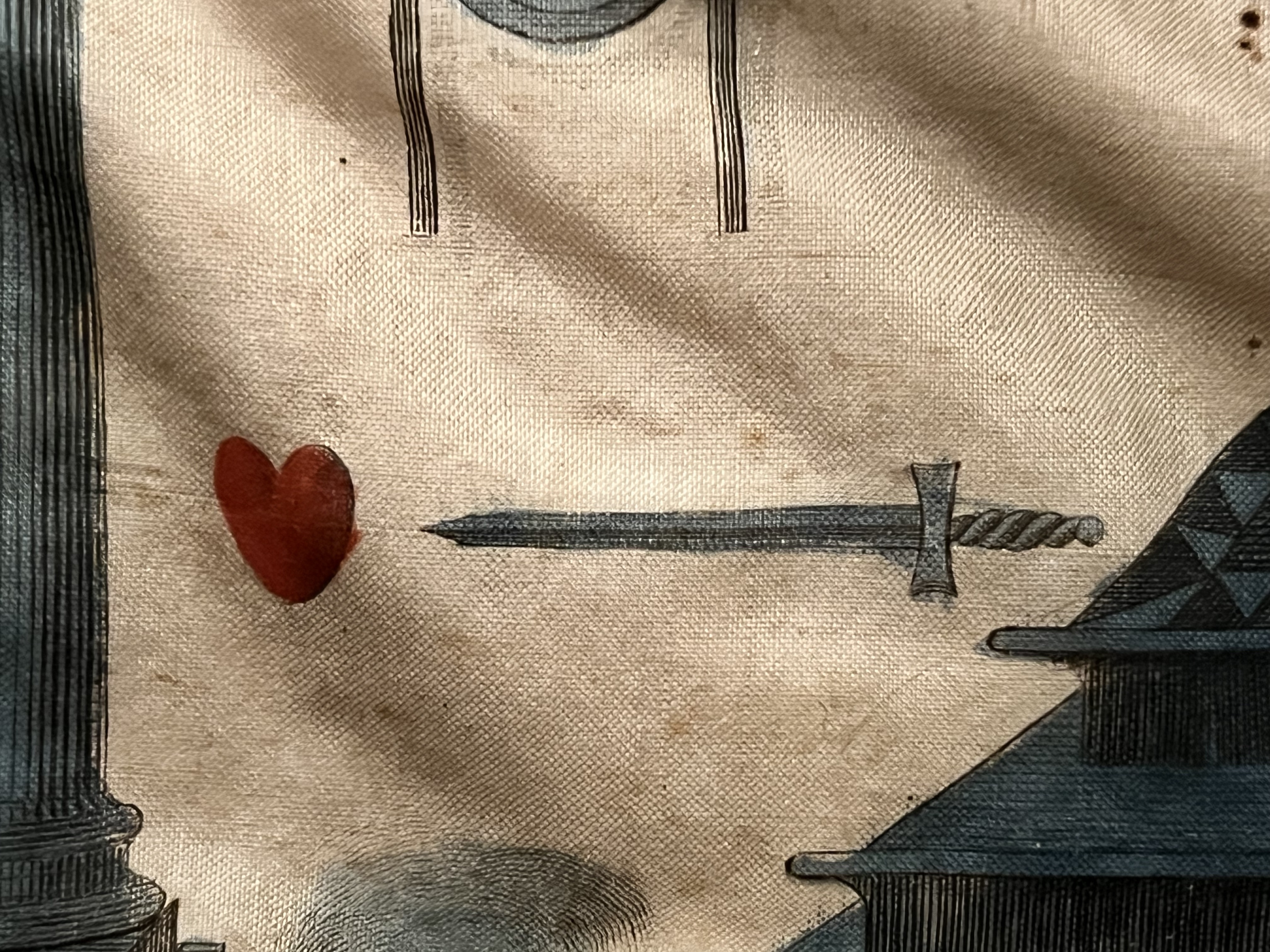
So there's no great contradiction between the ancient version of Valentine's Day and the Christian version - they're just different perspectives on feeling, on human connection, defined by more than just consciousness. That's what it means: seeing with the heart.
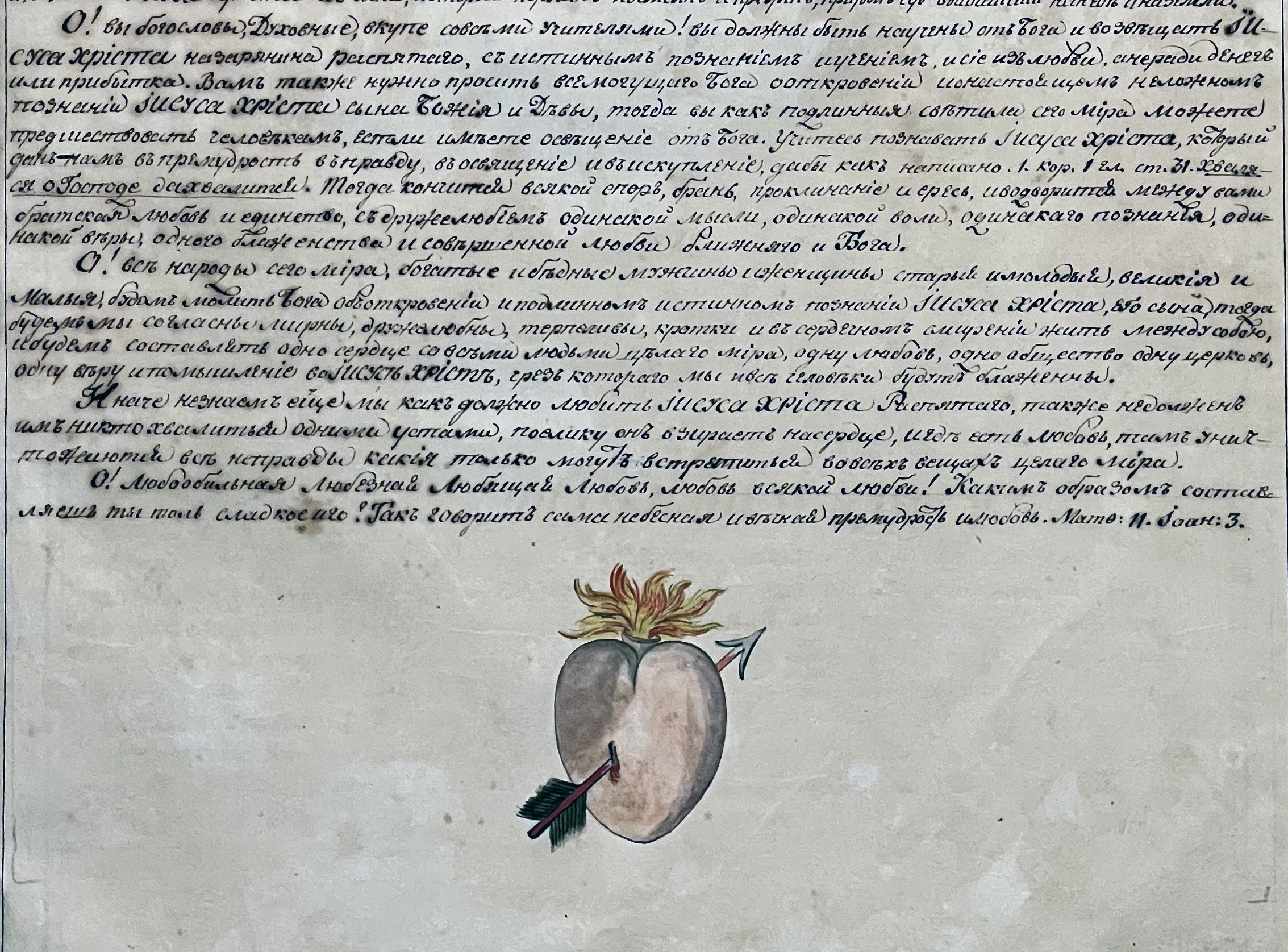
In the images are items from the museum's collection:
- pages from a Rosicrucian manuscript, Russia, 18th century;
- fragments of Masonic aprons from the 18th-19th centuries;
- a bronze Roman calendar, mentioning the mysteries of Lupercalia, Germany, late 19th century.
 Museum
Museum